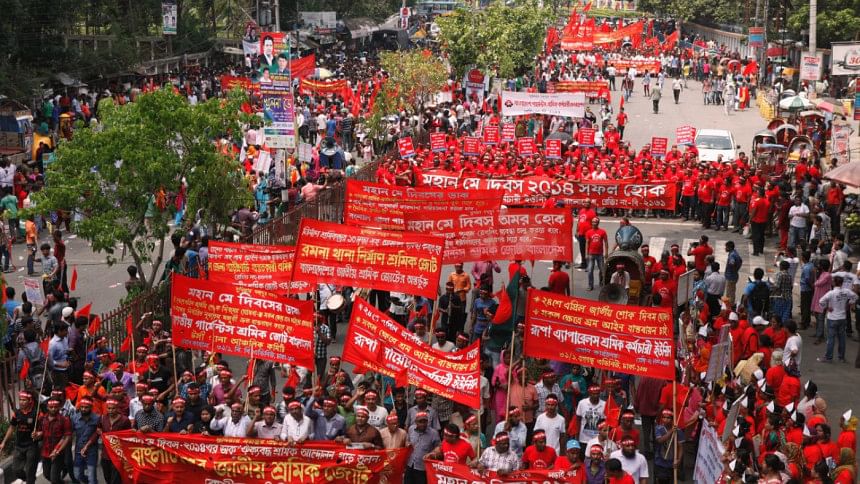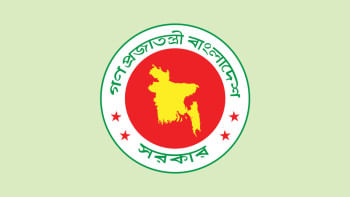Is the new model of trade unions the answer?

THE history and development of trade unions in the garment sector is different from other industrial sectors of Bangladesh. We know that the trade union in the garment sector has never been allowed to grow at the same pace since the development of the industry. There has been a continuous effort to hold back trade union activities in many ways. Sometimes this was achieved for trade liberalisation, in the name of creating trade union free Export Processing Zones to attract the global market etc. In these cases, the state's role has been very minimal in the sense that often it implemented policies prescribed by the World Bank and other international bodies.
As far as trade unionism is concerned, of late we are witnessing curious initiatives by various donors and NGO partners to promote labour union in this sector. Suddenly, there is a rise of registration of trade unions and we find the rise in number rather drastic; for example, an ILO report shows that a total of 96 trade unions have been registered within an eight month period in 2014 (from July 2013 to February 2014), whereas only two unions were registered in the last two years before July 2013 (from July 2011 to June 2013)! We wonder whether this sudden rise of trade unions is accidental, or whether there are other factors behind it.
Generally, actors of this sector and "experts" see the absence of trade union activity as a major reason for workers' exploitation. Often it is said that had there been union activities, much of these "accidents" could have been avoided. It appears that to solve these problems, different actors are becoming active and making an effort to increase the number of registered trade unions. We are not saying that this is good or bad. Rather what we would like to point out is that these initiatives do not generally consider the history of the labour movement and contextual intricacies (i.e. changes in labour laws) of the garment sector of Bangladesh. As researchers, we wonder whether these initiatives are at all close to the worker's lived reality or whether they will only serve the purpose of different economic and social interest groups. We believe that it is vital to understand the reality of the workers when bringing about any change.
What is the reality of workers to engage in trade union activity? Workers in this sector have to work in the factory for 12-16 hours on a regular basis. While overtime means extra work for higher payment, this can be a misnomer in a Bangladeshi context. Here 10 hours work is considered as regular working hours. Overtime is mandatory and it's a regular phenomenon. What is worse is that the workers get less payment than their regular pay for their "overtime." Considering the reality of the workers, we wonder whether it is possible to do any other activity after 12-16 hours of factory work. Moreover, more than 80 percent of the female workers in this sector have to do regular household chores after getting back home. They are discouraged by the factory management to be involved with union activity. According to a female worker, "The management does not see those workers positively who are assertive and who are involved with union activity. Such female workers, moreover, face barriers to get work in a factory." This is the lived reality of the workers. Should we ignore it? If not, then we should ask this question: how is the "standard model" of trade union (which ideally begins at the factory and culminates into federation) to be implemented?
Here we would like to point out that local labour rights organisations have worked amongst the workers facing many barriers. Parallel to this, we have seen the rise of NGO centred efforts. We see the activities of a new generation of NGOs, whose role is like that of both NGOs and trade unions. These organisations are run by foreign donations; they accept any international labour related campaign and donor prescription uncritically and take up the role of local implementers of these campaigns. Apparently, these organisations seem more capable compared to the local labour rights organisations in negotiating international trade. In addition to this, the fact that the heads of these organisations were former garments workers often gives them more credibility amongst different groups. It is appalling to see these organisations receiving funding from a brand's CSR money. In Nischintapur, Ashulia, where the Tazreen factory is located, we have seen that there were a number of such organisations which were active in the area. They mobilise the workers from the locality by employing a few workers who would work for them; they provide money to the workers to participate in their activities. Especially after the Tazreen fire, we saw that such NGO based labour organisations mobilised workers by committing to give them a big amount of "compensation" from the buyers. Instead of mobilising the workers against issues such as negligence and structural killing in the factory setting, one organisation in Nischintapur distributed relief goods such as blankets, powder milk etc. to the workers after a few days of the fire. It can be argued based on observations of their activities that by not organising the workers, the organisations were only upholding their own interests. The key credential of these organisations to receive donor funds is that they can mobilise workers for human chains, day celebrations and processions etc. Since money is involved, these organisations are better off in terms of organising big processions and meetings. When we tried to talk to workers gathered for such occasions, we noted that many of them did not even know why they came there. They only knew that so and so brought them there by bus and after the programme they would get some money and food and they would be taken back home! It is due to these reasons that organising for local workers' rights organisations is becoming difficult. From the workers' side, they see that if they join in the local trade union activity, they return home empty-handed, whereas if they participate in the donor-funded activity, they get money. Thus this new kind of NGO/donor/buyer driven model of garment workers' rights movement is becoming powerful. As a consequence, recently we have seen that a local workers' rights organisation distributed money to the workers to buy special food items to celebrate Eid!
The sudden increase in the number of trade registration is actually meeting bureaucratic requirements. In the aftermath of recent catastrophes, it is a measure taken by the state, tolerated by the BGMEA to improve 'the image,' to prove their keenness to ensure workers' rights. Labour organisations that do not subscribe to this NGO model of organising are met with rejection when applying for registration for their unions. In the backdrop of the rising number of unions registered, we want to ask: Who gets registered? Whose voice is tolerated? And finally, in the emerging NGO model of trade unionisation, aren't we witnessing the transformation of the relationship between the labour organisers and ordinary workers from a relationship of camaraderie to one of patron and client?
The writers are activists, teachers and researchers and also members of Activist Anthropologist.

 For all latest news, follow The Daily Star's Google News channel.
For all latest news, follow The Daily Star's Google News channel. 



Comments